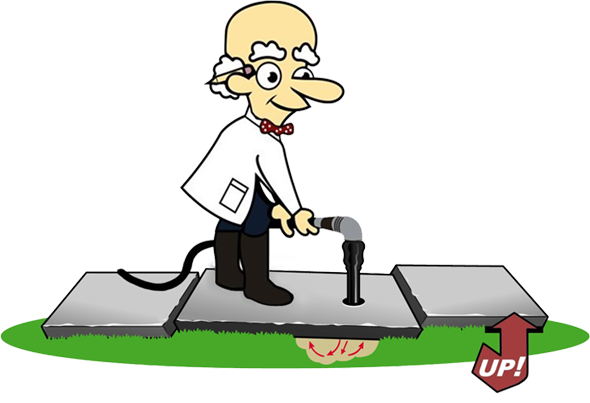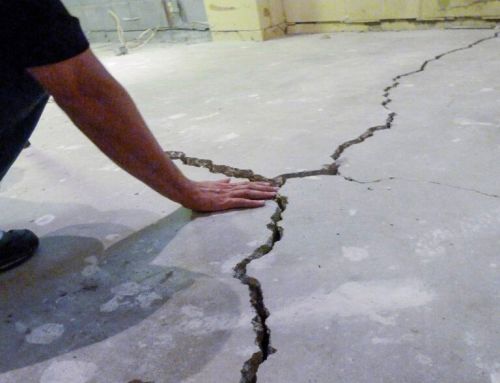IN THIS ARTICLE
Concrete is a durable and versatile material used in various construction projects, from sidewalks and driveways to buildings and bridges. However, even though concrete is strong, it is still susceptible to weather, chemicals such as deicing salts, and wear and tear damage. That’s where sealer application comes in.
Sealing concrete is a process that involves applying a protective layer to the surface of the concrete to prevent damage and extend its lifespan. In this ultimate guide, we’ll cover everything you need to know about sealing concrete, including how long after sealing concrete you can walk on it, the benefits of sealing, and the best concrete sealing services in Chicago, IL.
What is Concrete Sealing?
Concrete sealing is the process of applying a protective layer to the surface of concrete to prevent damage and extend its lifespan. This layer, also known as a sealant, acts as a barrier against water, chemicals, and other elements that can cause damage to the concrete.
How Does Concrete Sealing Work?

The concrete sealing application process involves cleaning and preparing the surface of the concrete, applying the sealant, and allowing it to dry and cure. The sealant penetrates the pores of the concrete, creating a protective barrier that prevents water and other substances from seeping in and causing damage.
Why Should You Seal Concrete?
There are several benefits to sealing concrete, including:
- Protection against water damage: Sealing concrete prevents water from seeping into the pores of the concrete, which can cause cracks and other damage.
- Protection against chemicals: Concrete sealants can also protect against damage from chemicals, such as oil and gasoline, which can cause staining and deterioration.
- Increased lifespan: Sealing concrete can extend its lifespan by protecting it from damage and wear and tear.
- Enhanced appearance: Sealing concrete can also enhance its appearance by giving it a glossy finish and preventing discoloration.
Types of Concrete Sealers
Outdoor concrete surfaces are exposed to various weather conditions, UV rays, and environmental elements, making it essential to use the right type of sealer for protection. Here are some types of outdoor concrete sealers for existing concrete:
- Penetrating Concrete Sealers:
- Silane Sealers: Excellent penetrating sealer for outdoor use, as they penetrate deeply into the concrete, providing protection against water, salt, and freeze-thaw cycles.
- Siloxane Sealers: Form a water-repellent barrier and are effective in preventing water intrusion and protecting against efflorescence.
- Acrylic Sealers:
- Water-Based Acrylics: These sealers are suitable for outdoor applications and provide protection against UV rays, water, and mild chemicals. They are available in various finishes, including glossy and matte.
- Solvent-Based Acrylics:These offer enhanced durability and are ideal for high-traffic outdoor areas. They provide a glossy or satin finish.
Some products are known as a cure and seal, which is applied when concrete is first oured, aloowing the concrete to cure.
- Polyurethane Sealers:
- Water-Based Polyurethanes: Provide UV resistance and protection against water, stains, and abrasion. They are suitable for outdoor concrete surfaces.
- Solvent-Based Polyurethanes: These sealers offer excellent durability and chemical resistance, making them suitable for outdoor applications.
- Epoxy Sealers:
- Clear Epoxy Coatings: While epoxy coatings are more commonly used indoors, some clear epoxy formulations are better suited for garage concrete floors but can be for outdoor use. They provide a hard, glossy surface and are resistant to chemicals and abrasion.
- Polyaspartic Sealers:
- These sealers offer fast curing times, making them suitable for outdoor projects with tight timelines. They provide UV resistance and durability.
- Concrete Densifiers:
- Silicate-Based Densifiers: These strengthen the concrete surface, making it more resistant to abrasion, dusting, and water penetration. They are suitable for outdoor applications.
- Stamped Concrete Sealers:
- Specialized Sealers: Some sealers are formulated specifically for stamped and decorative concrete surfaces outdoors. They enhance color, provide protection, and improve longevity.
- High-Gloss or Matte Finishes:
- Many sealers, whether acrylic, polyurethane, or epoxy, are available in different finishes, allowing you to choose a high-gloss or matte appearance based on your aesthetic preferences.
When selecting an outdoor concrete sealer, consider factors such as the type of concrete, climate conditions, existing sealer and the specific protective qualities required. Always follow the manufacturer’s recommendations for application and maintenance to ensure the longevity and effectiveness when applying concrete sealers.
How Long After Sealing Concrete Can You Walk on It?
One of the most common questions about sealing concrete is how long after apply sealer can walk on it. The answer depends on several factors, including the type of sealant used, the temperature and humidity, and the condition of the concrete.
Drying Time vs. Curing Time
It’s important to understand the difference between drying time and curing time when it comes to sealing concrete. Drying time refers to the time it takes for the sealant to dry on the surface of the concrete. This can range from a few hours to a full day, depending on the type of sealant and the weather conditions.
Curing time, on the other hand, refers to the time it takes for the sealant to fully bond with the concrete and reach its maximum strength. This can take anywhere from 3-7 days, depending on the type of sealant and the weather conditions.
Factors That Affect Drying and Curing Time
Several factors can affect the drying and curing time of concrete sealants, including:
- Type of sealant: Different types of sealants have different drying and curing times. For example, acrylic sealants dry faster than polyurethane sealants.
- Temperature and humidity: Higher temperatures and lower humidity can speed up the drying and curing process, while lower temperatures and higher humidity can slow it down.
- Condition of the concrete: If the concrete is old, damaged, or has a lot of cracks, it may take longer for the sealant to dry and cure.
How Long After Sealing Can You Walk on Concrete?
In general, you should wait at least 24 hours before walking on sealed concrete. However, this can vary depending on the factors mentioned above. It’s always best to follow the manufacturer’s instructions for your specific sealant.
How Often Should You Seal Concrete?
The frequency of sealing concrete depends on several factors, including the type of sealant used, the amount of foot or vehicle traffic, and the weather conditions. Generally, sealing concrete every 3-5 years is recommended, but this can vary.
Signs That Your Concrete Needs to be Sealed

There are a few signs that your concrete may need to be sealed, including:
- Water seeping into the concrete: If you notice water pooling on the surface of your concrete, it may be time to reseal it.
- Stains and discoloration: If your concrete is starting to look discolored or stained, it may be a sign that the sealant has worn off and it’s time to reseal.
- Cracks and damage: If you notice cracks or other damage on the surface of your concrete, it’s important to seal it to prevent further damage.
How to Choose the Right Concrete Sealing Services
When it comes to sealing concrete, choosing the right company for the job is important. Here are a few things to consider when choosing concrete sealing services.
- Experience and expertise: Look for a company with experience and expertise in sealing concrete. They should have a portfolio of past projects and positive reviews from satisfied customers.
- Quality of products: Make sure the company uses high-quality sealants designed for your concrete’s specific needs.
- Customer service: A good company should have excellent customer service and be willing to answer any questions you may have about the sealing process.
- Cost: While cost shouldn’t be the only factor in your decision, choosing a company that offers competitive pricing for their services is important. The first step is determining how many square feet of concrete needs to be sealed.
Conclusion
Sealing concrete is an important step in protecting and extending the lifespan of your concrete surfaces. By understanding the process and knowing how long it takes after sealing concrete for you to walk on it, you can ensure that your concrete is properly sealed and maintained. When you contact your local concrete sealing services, you can have peace of mind knowing that your concrete is in good hands. Concrete Chiropractor is a NJ and PA-based mudjacking & repair company.
Visit our Learning Center for more concrete maintenance-related articles, or for concrete leveling services, click the link below:
Click Here to Contact Your Location and Receive a Professional Sidewalk Evaluation
- Garage Floor Raising and Coating: The Ultimate Guide - June 4, 2024
- Mudjacking Cost: 5 Factors That Affect It - April 10, 2024
- What is The Average Cost of Concrete Leveling in Belle Mead, NJ? - April 4, 2024







